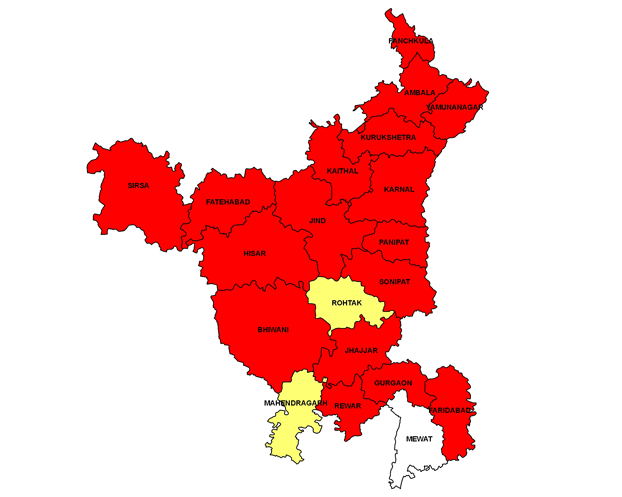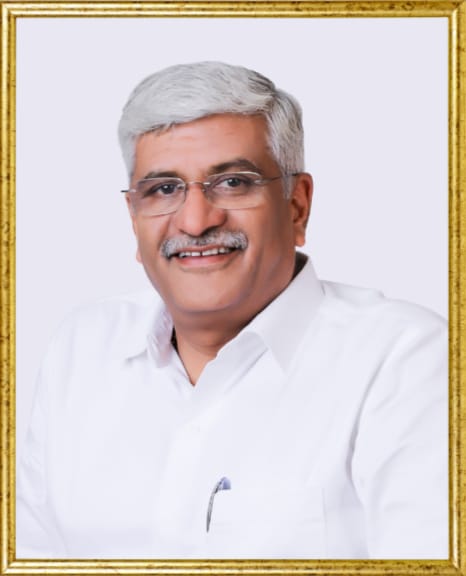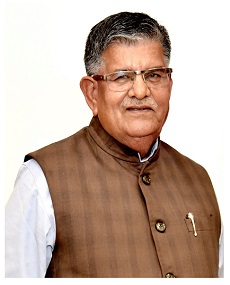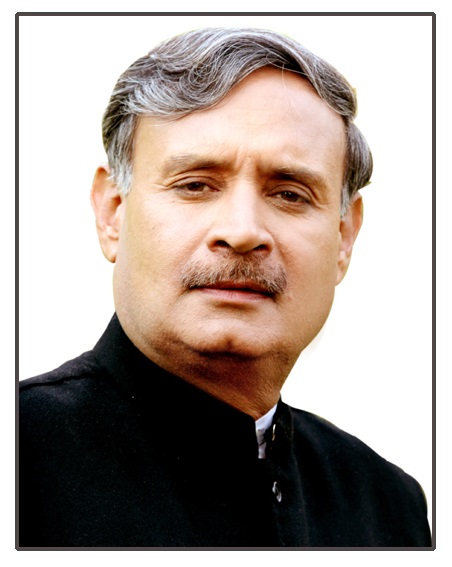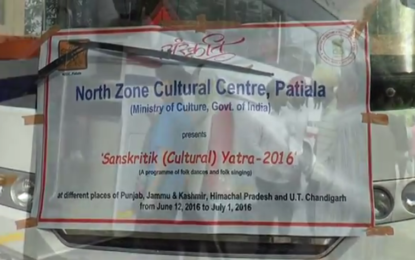HARYANA
Haryana, state in north-central India. It is bounded on the northwest by the state of Punjab and the union territory of Chandigarh, on the north and northeast by the states of Himachal Pradesh and Uttarakhand, on the east by the state of Uttar Pradesh and the union territory of Delhi, and on the south and southwest by the state of Rajasthan. The city of Chandigarh, within the Chandigarh union territory, serves as the capital of not only that territory but also of the states of Haryana and Punjab.
Haryana was constituted on Nov. 1, 1966, as a result of the partition of the former state of Punjab into two separate states—Punjabi-speaking Punjab and Hindi-speaking Haryana. Although the reorganization followed demands made by the Sikh community for a Punjabi suba (Punjabi-speaking province), it also substantially met the aspirations of people in the Hindi-speaking region of Punjab for a Vishal Haryana (Greater Haryana). The name Haryana, from Hari (the Hindu god Vishnu) and ayana (home), means “The Abode of God.” Area 17,070 square miles (44,212 square km). Pop. (2011) 25,353,081.
Land
Relief and drainage
Haryana has two major physiographic regions: the flat alluvial plain covering most of the state and, in the northeast, a strip of the highly dissected Siwalik (Shiwalik) Range (including the narrow foothill zone). Remnants of the Aravalli Range, which stretches from southwestern Rajasthan to Delhi, are evident in parts of southern Haryana.
The alluvial plain lies at an elevation of 700 to 900 feet (210 to 270 metres) and is drained by only one perennial river, the Yamuna, located on the state’s eastern border. Many seasonal streams flowing from the Siwalik Range pass through the area, however. The most notable of these is the Ghaggar (near the state’s northern boundary), which once flowed far enough to join the Indus River, in what is now Pakistan.
Soils
The soils of Haryana are generally deep and fertile. There are some exceptions, however, including the eroded lands of the hilly northeast and the sandy areas of the southwest that fringe the Thar (Great Indian) Desert of Rajasthan. Most of the state’s land is arable, but much requires irrigation.
Climate
The climate of Haryana is hot in the summer and markedly cold in winter; maximum temperatures in May and June may exceed 110 °F (43 °C), and in January, the coldest month, low temperatures may drop below the freezing point.
Most of the state experiences arid to semiarid conditions; only in the northeast are conditions relatively humid. Precipitation averages about 18 inches (450 mm) annually, most falling between July and September. Although the state has a system of canal irrigation and tube wells, there are chronic drought-prone areas, particularly in the southern and southwestern regions. By contrast, the areas surrounding tributaries of the Yamuna and the Ghaggar are subject to occasional floods.
Plant and animal life
Little natural vegetation remains in Haryana. Eucalyptus trees are planted along the highways and in wastelands. Shisham (Dalbergia sissoo) trees grow along the roads and canals in the northern half of the state, while small, spiny kikar (Acacia arabica) trees and scrub are found in southern and southwestern Haryana.
Haryana is home to a variety of mammals. Larger species, including leopards, jackals, wild boars, and several types of deer, among others, are generally limited to the hilly regions of the northeast and the far south. Small mammals, such as bats, squirrels, mice, rats, and gerbils, are common in the plains. Ducks and teals of various sorts are found near the rivers. Pigeons and doves are common in the agricultural areas, as are small, colourful birds such as parakeets, buntings, sunbirds, bulbuls, and kingfishers. Several species of snakes are found in the state; among these are pythons, boas, and rat snakes, as well as poisonous kraits and vipers. Other reptiles, including various lizards, frogs, and tortoises, also inhabit Haryana.
People
Population composition
Hindus constitute the great majority of Haryana’s population. Sikhs and Muslims each form a small but significant minority; there is also a tiny community of Christians. Most of the state’s Sikh population is located in the northeast and northwest, while Muslims are concentrated in the southeastern districts adjoining Delhi. Jats (members of the peasant caste) form the backbone of Haryana’s agricultural economy. They also are prominent in India’s armed forces.
Settlement patterns
Roughly three-fourths of Haryana’s population remained rural in the early 21st century; however, cities have continued to grow rapidly as commercial, industrial, and agricultural marketing centres. The state’s largest cities include Faridabad, Rohtak, Panipat, Hisar, Sonipat, and Karnal. With the exceptions of Rohtak, which is in central Haryana, and Hisar, which is in the northwest, most of the major urban centres lie in the eastern part of the state.
Economy
Agriculture
An agriculturally prosperous state, Haryana contributes a large amount of wheat and rice to the Central Pool (a national repository system of surplus food grain). In addition, the state produces significant quantities of cotton, rape and mustard seed, pearl millet, chickpeas, sugarcane, sorghum, corn (maize), and potatoes. Dairy cattle, buffaloes, and bullocks, which are used for plowing the land and as draft animals, are prominent in the northeastern region.
Haryana’s agricultural productivity is largely attributable to the so-called Green Revolution, an international movement launched in the 1960s to diminish world hunger. As a result of this movement, large-scale investments have been made in irrigation, fertilizers, and high-quality seeds. In the early 21st century, nearly two-fifths of the state’s workforce was employed in agriculture.
Manufacturing
Haryana has made rapid strides in the development of agriculture-based manufacturing. Among the most important of such industries are cotton and sugar processing and the production of farm machinery. Haryana also manufactures chemicals as well as a great variety of consumer goods, most notably bicycles.
Transportation
Haryana has long been well connected to surrounding states and to the rest of India. A number of major highways and railway lines—including the historic Grand Trunk Road and the main line of the Northern Railway—pass through the state to converge on Delhi. State-owned bus service operates between most of Haryana’s larger towns and cities. The state is served by a domestic airport in Chandigarh.
Government and society
Constitutional framework
The governmental structure of Haryana, like that of most Indian states, is defined by the national constitution of 1950. The governor, appointed by the president of India, is the head of the state. The Council of Ministers, which is led by a chief minister and is accountable to the state’s Legislative Assembly (Vidhan Sabha), assists and advises the governor. Haryana’s legislature is a unicameral body; members are normally elected to a five-year term. The state has a common High Court with Punjab.
Haryana comprises four divisions, each of which consists of a number of districts. Divisional commissioners oversee the divisions, while each district is headed by a deputy commissioner. The council (panchayat) system of self-government operates at the village level.
Health and welfare
A network of district and subdivisional hospitals and primary health centres provides health and medical services throughout Haryana. Since the early 1990s all villages in the state have had access to safe drinking water. The state government provides loans and grants to members of traditionally disadvantaged communities for agricultural, industrial, and business activities.
Education
Education has been given a high priority in the state’s development program, and both the government and private organizations have made a significant contribution to the promotion of education at all levels. However, while thousands of primary and secondary schools have ensured that basic education is available throughout the state, much of the population—especially rural women—remained unable to read in the early 21st century. In an effort to reverse this tendency, the state has continued to provide assistance to students from socially and economically disadvantaged backgrounds to pursue education of all sorts.
Several universities and hundreds of smaller colleges offer postsecondary education in or near Haryana’s larger towns and cities. Among the state’s most prominent tertiary institutions are the National Dairy Research Institute (1923) at Karnal and Kurukshetra University (1956) and the National Institute of Technology (1963), both at Kurukshetra, in the northeastern region; Maharshi Dayanand University (1976) at Rohtak, in central Haryana; and Chaudhary Charan Singh Haryana Agricultural University (1970; including a renowned college of veterinary sciences) and Guru Jambheshwar University of Science and Technology (1995), both at Hisar, in the northwest. Of the smaller colleges, most provide general education, and many are exclusively for women.
Cultural life
Haryana’s cultural life reflects both the seasonal rhythm of its agricultural economy and a treasure of traditions and legends with roots in ancient India. The boisterous spring festival of Holi is celebrated by people showering coloured powder (or coloured powder mixed with water) on each other, irrespective of age or social status. Janmasthami, the birthday of Krishna (an incarnation of the god Vishnu), is of special religious importance in Haryana because it was on a battlefield at Kurukshetra that Krishna is said to have delivered to the warrior Arjuna the teachings contained in the Bhagavadgita (a part of the epic known as the Mahabharata). Festivals in honour of other deities and saints are also an important element of the state’s cultural life, as are cattle fairs, which are held at a number of locations.
Many prominent pilgrimage sites are located in Haryana. The solar eclipse bathing festival at Kurukshetra invariably attracts hundreds of thousands of pilgrims from various parts of India. Pehowa, in north-central Haryana, is an important pilgrimage centre as well. Situated on the bank of the sacred Sarasvati River (identified with Sarasvati, a Hindu goddess of learning and the arts), it is considered a premier place for performing propitiatory rites for ancestors (shraddha). Rites to ensure the salvation of the souls of those who died unnatural deaths or who died in bed are also performed at Pehowa.
Haryana’s traditional family homes, called haveli, are known for their unique architectural features, especially their gates and podiums. The elaborate gates of these homes ultimately impart a medieval—and aesthetically pleasing—character to Haryana’s alleys, while the buildings themselves have richly decorated podiums that are used for various social and religious functions. These podiums indicate the social status of the owner of the haveli.
The Vedas, the most ancient manuscripts of the Vedic religion, stem from the area that is now known as Haryana. These Sanskrit documents were written by the Aryans, who descended into the region from the north between 2000 and 1500 bce. Haryana is also considered to be the birthplace of Hinduism, which began to take discernible shape by the 2nd century bce and had developed two distinct branches by the 4th century ce.
Lying across the route of overland incursion into India, Haryana has experienced many waves of migration over the millennia; a notable invasion was led by Alexander the Great in 326 bce. The area also has been the site of numerous decisive battles of Indian history. Among the most significant of these conflicts were the Battles of Panipat, which occurred in 1526 , when the Mughal leader Bābur defeated Ibrāhīm Lodī and established Mughal rule in India; in 1556, when Afghan forces were defeated by the army of the Mughal emperor Akbar; and in 1761, when Aḥmad Shah ʿAbdāli decisively defeated the Marathas, paving the way for British control in India. Also important was the Battle of Karnal, in 1739, when Nāder Shah of Persia dealt a blow to the crumbling Mughal Empire.
The area included in the present state of Haryana was ceded to the British East India Company in 1803. In 1832 it was transferred to the then North-Western Provinces of British India, and in 1858 Haryana became a part of Punjab. The union between Haryana and Punjab was awkward, however, largely because of religious and linguistic differences between the two regions: Punjabi-speaking Sikhs of Punjab vis-à-vis Hindi-speaking Hindus of Haryana. By the first decades of the 20th century, agitation for a separate state of Haryana was well under way, led most notably by Lala Lajpat Rai and Asaf Ali, both prominent figures in the Indian national movement, as well as by Neki Ram Sharma, who headed a committee to cultivate the concept of an autonomous state.
Haryana remained part of Punjab after the partition of India and Indian independence in 1947, but the demand for separate states—supported by both Hindus and Sikhs—continued, undiminished. Indeed, the movement gained momentum, reaching its fullest intensity in the early 1960s. Finally, with the passage of the Punjab Reorganization Act (and in accordance with the earlier recommendations of the States Reorganization Commission), Haryana was separated from Punjab in 1966 to become the 17th state of India.
Information
-
 FOLK ARTIST AND YOUNG ARTIST HONOUR AWARD 2024
FOLK ARTIST AND YOUNG ARTIST HONOUR AWARD 2024Oct 09, 2024 Comments Off on FOLK ARTIST AND YOUNG ARTIST HONOUR AWARD 2024
Events
-
 National Sculpture (Stone & Fiber) Camp-2024 at...
National Sculpture (Stone & Fiber) Camp-2024 at...Nov 04, 2024 Comments Off on National Sculpture (Stone & Fiber) Camp-2024 at Kalagram, Manimajra, Chandigarh from November 4 to 23, 2024
-
 Celebration of Birth anniversay of Shaheed Bhagat Singh
Celebration of Birth anniversay of Shaheed Bhagat SinghSep 26, 2024 Comments Off on Celebration of Birth anniversay of Shaheed Bhagat Singh
Videos
Follow us on Facebook
Follow us on Twitter
Related Links
Archives
- November 2024
- October 2024
- September 2024
- June 2024
- May 2024
- March 2024
- January 2024
- December 2023
- November 2023
- October 2023
- September 2023
- August 2023
- June 2023
- May 2023
- April 2023
- January 2023
- December 2022
- November 2022
- October 2022
- September 2022
- August 2022
- July 2022
- June 2022
- May 2022
- April 2022
- March 2022
- February 2022
- December 2021
- November 2021
- October 2021
- September 2021
- July 2021
- June 2021
- March 2021
- February 2021
- January 2021
- December 2020
- October 2020
- August 2020
- July 2020
- March 2020
- February 2020
- January 2020
- December 2019
- November 2019
- October 2019
- September 2019
- August 2019
- July 2019
- June 2019
- April 2019
- March 2019
- February 2019
- January 2019
- December 2018
- November 2018
- October 2018
- September 2018
- August 2018
- July 2018
- June 2018
- May 2018
- April 2018
- March 2018
- February 2018
- January 2018
- December 2017
- November 2017
- October 2017
- September 2017
- August 2017
- July 2017
- June 2017
- May 2017
- April 2017
- March 2017
- February 2017
- January 2017
- December 2016
- November 2016
- October 2016
- September 2016
- August 2016
- July 2016
- June 2016
- May 2016
- April 2016
- March 2016
- January 2016
- December 2015
- October 2015
- September 2015
- August 2015
- July 2015
- June 2015
- April 2015
- February 2015
- January 2015
- November 2014
- October 2014
- August 2014
- March 2014


